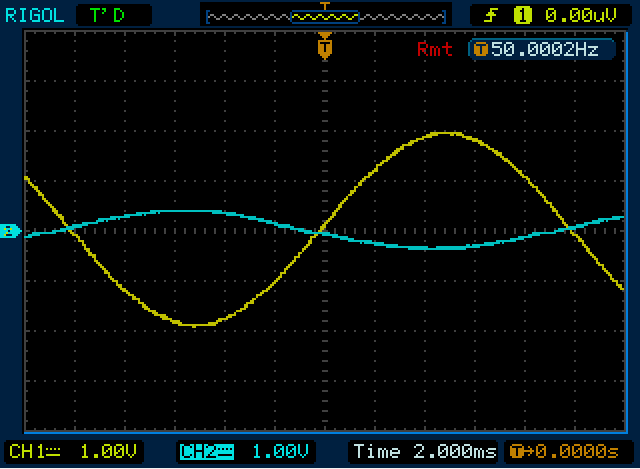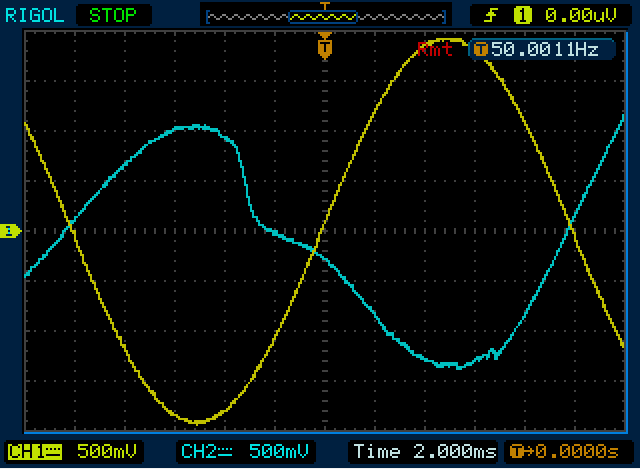Well, a very interesting description of this issue Kingston - thanks for taking the time to describe, in your own forthright, candid and even a little controversial style

You simultaneously bring issues to light and make unique narrative around them, as well as those who brought them to us.

-------
I've always felt that my simple time constant implementation is probably not the best and letting the side down in terms of the grabbing/release characteristics. Resulting a little mangling of the waveshape.
A tendancy to be a little 'flabby' or with somewhat too much 'laissez-faire' attitude towards the grab and release.
Even on the quicker settings.
I have a feeling you probably may be right - I haven't noticed or checked this particular distortion you mention, so I think I'll take a look myself.
It's not easy to capture these sorts of dynamic behaviours so spending some more time is probably worthwhile now that I have a several year working unit.
------
That aside, I definately agree there are some distortions present in a typical working unit related to all manner of mismatches in tubes, transformers and such.
But my experience has not been that they are not that bad - I would characterise my units as having a mild but definite tube character and some graininess from the Edcors. Good for tracking and such.
I don't think I've come across a usage where I heard anything at all in the way of thump, however.
The actual GR performance is pretty transparent in sound but I do notice some unevenness is grab/release
And I agree these are not my choice for any kind of hi-fi mastering, although maybe on some mix stems would be good.
Particularly if looking for some .. warmth/distortion .. whatever one might call it.
But I certainly haven't so far noticed the obvious kinds of
explosive flatulent events you refer to!
For sure, there is a strong measure of instability there, probably related to the amount of wiring and quantity of easily-interfered-with Edcor xsm transformers which seem to need quite optimal placement otherwise noise can take a hit.
And I have had lots of sessions retracing my steps and so on to eliminate issues when building.
-----
Another interesting alternative is baadcode's hybrid vari-gm with discretes and so on - the prr175 build might be an easier and more refined way to go. Both in terms of the sound and also the building effort.
Anyway, glad to have them and education that went with it. And that prepares me for the MkII hybrid pcb/pp approach I'm taking on my the next one.
The standard PM670 requires a will of iron to see through. Not at all for the faint of heart

My own big-block dual unit cost about $1100us or so from memory, and I would say around $600us for a single channel with good VU meter and Edcor signal traffos.
I do recommend doing a single unit(s) - quite a bit easier to get it right with only 1 in a box.
I think the stability and likelyhood to oscillate or noise out would be better too.
Not to mention that cash money part!
-----
However, mine work well, I use them alot - nice on mic'd acoustic guitar too - that is a hifi delicate application and it works very well for me. I consider them to be stable, trouble free and in the studio, am happy to reach for them

(Disclaimer - I'm not a studio professional ;D)
I wouldn't play a bass thru it unless I wanted some preamp-like brown crunch added - it sounds a bit like a Rickenbacker bass compared to a Fender bass. Flabbier and with some growl

Happily, I happen to luv that sound on the bass, so I use it all the time for that!
For sure on all manner of eguitars. Even the piano especially for dirty rhodes and the like.
I have it in line with a G9 and dual Gpultec - all of it together still makes for a decently hifi sound if I want it.
And also very easy to drive harder for effects when desired. The relay bypasses on each unit mean I can switch them easily out of the chain for comparison.
The single channel of it I incorporated into a channel-strip-with-drive-stage really benefits from it - I feel it actually cleans up a crunched-up intrument sound so the overall thing sounds tighter and crisper. Definately reminds me of tape effects - subtle but you know it's there and would miss it if 'twern't
cheers





































